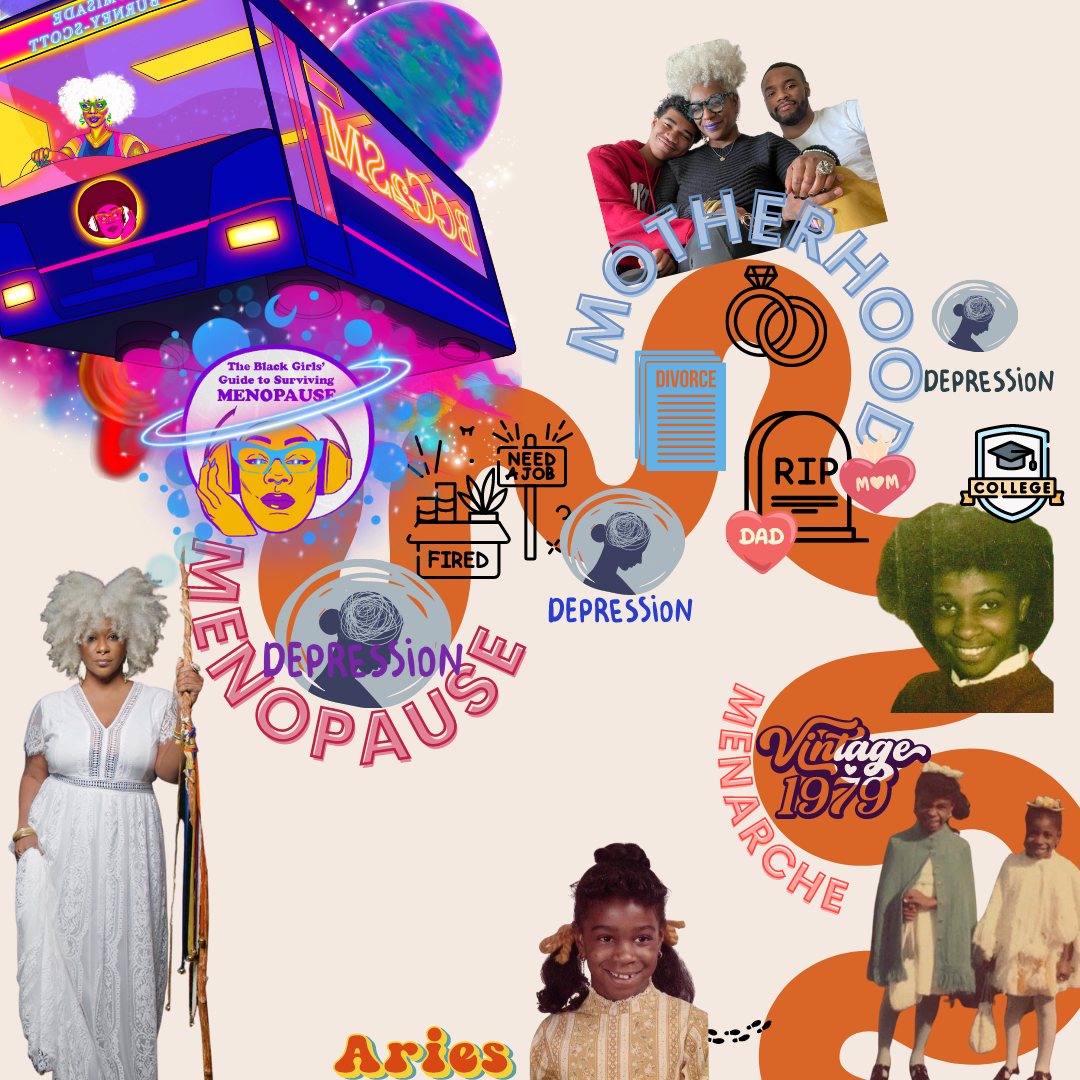The wealth of contradictory information regarding menopause has rendered it difficult to grasp its true nature - what characterizes it, what distinguishes it, when to anticipate it, and how to navigate through it. It appears that every individual with a uterus and ovaries could benefit from a straightforward guide for navigating this inevitable journey. I experienced a menstrual cycle for 34 years. I have been post-menopausal for a little over 10 years. Reflecting on it now, I've come to realize that my journey through menopause didn't commence in my late 30s; it began when I had my first period at the age of 12 because menopause is literally the ceasing of your menstrual cycle. For folks reading this and thinking you may be menopausal because you haven’t had a period for over 6 months, try not to get ahead of yourself. To reach the "official" menopausal status, you need to experience a complete absence of a menstrual cycle for a full year, spanning 365 uninterrupted days. This entails no spotting or breakthrough bleeding whatsoever.
We all rely on GPS in our travels, but what if we could envision a way to create our own map for finding our way home? A map derived from our personal experiences, memories, stories, and truths. It's more than just a menopausal map we need; perhaps we require a comprehensive course in becoming our own cartographer, shaping our unique paths.
Come and take a walk with me.
The Art and Science of Menopausal Cartography
Cartography is the art and science of making maps. It is a way of representing the Earth's surface on a flat surface, like a piece of paper or a computer screen. Cartographers use a variety of tools and techniques to create maps, including surveying, aerial photography, and satellite imagery. They also use mathematical equations to project the Earth's curved surface onto a flat surface. Maps are used for a variety of purposes, including navigation, planning, and education. They can also be used to create art and to tell stories. Here are some fundamentals of cartography:
- Set the map's agenda and select traits of the object to be mapped. This is called map editing. The traits you select can be physical, like roads or land masses, or abstract, like toponyms or political boundaries.
- Represent the terrain of the mapped object on flat media. This is called map projection.
- Eliminate the mapped object's characteristics that are irrelevant to the map's purpose. This is called generalization.
I was first introduced to the language of cartography by my dear friend Michelle Lanier. Michelle is a seasoned cultural scholar, museum professional, documentary educator and producer, and public humanities professional with two decades of experience in curatorial work, pedagogical initiatives, intellectual inquiry, and multi-modal documentary production. She serves as the Director of 25 historic sites, properties, and museums across the state of North Carolina. She is also a womanist cartographer. Ok, Omisade, what is a womanist cartographer and what does that have to do with menopause?
I’m so glad you asked.
Womanist Cartography, a term coined by Michelle, “recenters Black women and femmes by rendering our narratives visible, audible, legible, and autonomous. The goal of this approach is to renegotiate Black femme presences in the American South”. How does the combination of art and science in creating maps relate to how humans navigate menopause on physical, cultural, and societal levels? I'm not talking about the small "p" political aspect but the larger "P," delving into systemic and cultural analysis. Womanist cartography invites us to gain a deeper understanding of how menopause impacts your individual menstrual cycle and why it's essential to master the skill of mapping your unique journey with your menstrual cycle in ways that are visible, audible, legible, and autonomous. Adopting a menopausal cartographer’s identity has helped me not only navigate my unique journey through the Menopausal Multiverse but also become a trusted guide to those journeying with me.
Mapping the Menopausal Multiverse
The Menopausal Multiverse term was originated by The Black Girl's Guide to Surviving Menopause to encapsulate the vast spectrum of marginalized experiences during menopause. It encompasses the diverse experiences of menopausal individuals, spanning historical and contemporary contexts. It also encompasses ancestral technologies, various systems of care, and potential liberated futures free from systemic oppression like white supremacy, patriarchy, misogyny, and homophobia. Furthermore, it celebrates cultural wisdom and incorporates the idea of generational healing. You hold that wisdom in your body, too, no matter where you are on your menopausal journey. Here’s a crash course in becoming your own menopausal cartographer.
- Trust your journey with your body and spend time reflecting on your experiences with your menstrual cycle (think debut or onset, timing, frequency, flow, ending, etc.)
- X marks the spot of beginnings and endings. When did your period begin? Where were you? Who was with you? Did you feel prepared or supported? What has changed over the course of your menstrual cycle journey? Where are you now?
- Don’t be afraid of the blood. Menstrual blood carries messages about our health and general well-being. My first menstrual blood was brown. My last menstrual blood was pink. The visual evidence of your menstrual cycle through your own menstrual flow is important for you to understand and track.
- Create a legend of material conditions, experiences, or iconography specific to your menstruation journey. These can include but aren’t limited to:
- Create a blood “key” on your map that helps you track the message offered by your body’s navigational system, for example:
- Bright red—quick passage
- The blood gets darker over the course of the cycle. This is because older blood from the deeper parts of the uterine lining is shed late–older/long passage
- Dark red or brown blood may be an early sign of pregnancy
- Black blood may be a sign of blockage
- Return to your map often. Revise it. Share it. Maps are storytellers and problem-solvers
Understanding and navigating your personal journey through the Menopausal Multiverse relies significantly on how accurately you've charted your course on your menstruation map. Your menstruation map is a record of your unique menstrual experiences, tracking the ebbs and flows of your menstrual cycle throughout your life.
By keeping this map up to date and precise, you enhance your ability to anticipate and comprehend the diverse terrains of menopause. The data on this map offers crucial insights into patterns, fluctuations, and signs that may indicate the onset of menopause. It's like having a navigation system that not only shows where you've been but helps predict where you're headed.
As the cartographer of your own detailed and accurate menstruation map, you approach your menopausal journey with a sense of readiness and empowerment. You're equipped with the knowledge needed to make informed decisions and adapt to the changes your body and mind may undergo. It grants you the power to navigate with a deeper level of introspection, understanding how your experiences fit into the broader context of the Menopausal Multiverse.
Ultimately, this level of preparedness and data-driven navigation brings a feeling of safety and assurance. You can embrace the transition into menopause with a sense of confidence, knowing you've taken proactive steps to understand and manage this important phase of life.
Omisade Burney-Scott is a seventh generation AfroCarolina southerner, Black feminist and storyteller, with more than two decades of experience in reproductive and healing justice. She is creator of The Black Girl’s Guide to Surviving Menopause, a narrative-shifting multimedia project centered on the intergenerational stories of Black women, femmes, and gender-expansive people.






